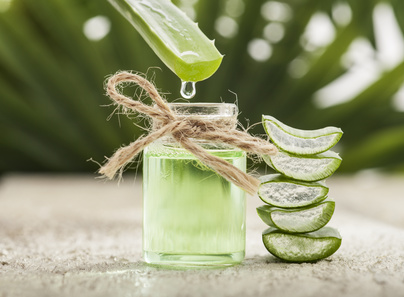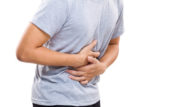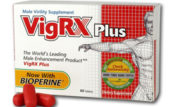 A hot knife twisting in your gut.
A hot knife twisting in your gut.
If you’re curious about kidney stones, that’s how they feel. Kidney stones produce some of the most painful symptoms of the human body. Many compare it to the pain of childbirth and some say it’s worse – one woman who’s given birth to four children and had kidney stones says she’d rather have four more babies than the pain of another stone.
Yes, they’re that painful.
So how do you get kidney stones? You can start by being a man in your forties – though women can get them and you can be younger too – with a diet high in sodium. Now add a few more factors, like dehydration, a high protein diet and an unlucky genetic hand, and you may be among the 10% of Americans who will have a kidney stone in their lifetime.
The (sort of) good news is that you can often prevent kidney stones with dietary and lifestyle changes. You’ll want to drink at least 8 glasses of water daily to start – and might want to slip lemon in there – along with smaller meat portions and other ways to lower your risk for one of the worst pains known to man.
What Are Kidney Stones?
A kidney stone is a crystal made of salts and minerals that clump together to form small pebbles in the urine. They can be a small as a grain of sand or bigger than a golf ball. They can stay in your kidneys or leave your body through the urinary tract.
It’s when they enter the narrow tube that connects your kidneys to bladder, called the ureter, that you’re likely to scream like you can’t imagine.
Kidney stones form when there’s a change in the normal balance of water, salts and minerals that make up your urine. Dehydration is the leading cause of kidney stones, which generally fall into four categories:
Calcium Stones – The most common type of kidney stone. These are made of calcium compounds, especially calcium oxalate. Over 80% of kidney stones are this variety, though ironically, eating calcium-rich foods may actually lower your risk of these unpleasant little disturbers. We’ll talk about that later.
You should visit a hospital immediately if you have severe nausea, vomiting and/or a fever with the chills with your kidney stone symptoms – these are signs the stone has become infected. This is a medical emergency.
Uric Acid Stones – Uric acid is a waste product that typically leaves the body when you urinate. You’re at higher risk of uric acid stones if you don’t pee often, eat a lot of animal protein, binge drink alcohol or have gout or inflammatory bowel disease.
Struvite Stones – Sometimes called infection stones, struvite stones get that morbid description because they can occur with kidney or urinary tract infections. They can get large too, and may require both antibiotics and medical removal.
Cystine Stones – Relatively uncommon, these are made of a chemical called cystine. Cystine stones appears to run in families with a condition that causes too much of this chemical in the urine.
 The unpleasant part of kidney stone diagnosis is that you likely won’t know what kind of kidney stones you have until your first trip to the hospital. Your doctor will likely give you a strainer to catch the stone as you urinate in the next few days.
The unpleasant part of kidney stone diagnosis is that you likely won’t know what kind of kidney stones you have until your first trip to the hospital. Your doctor will likely give you a strainer to catch the stone as you urinate in the next few days.
If you catch it, you can send it to your doctor for analysis. You’re in better shape to prevent future kidney stones when you know the kind that you have.
Why They Hurt
Kidney stones hurt when they get stuck in the narrow tube that carries urine from the kidneys to your bladder. The stone blocks flow of urine and stretches this tube, called the ureter, which is lined with pain-sensing nerves.
The blockage stretches the ureter and sends pain signals to the brain. If it persists, the body then releases a chemical called prostaglandin E2, which produces waves of pain that flow downward. The blood vessels leading to the kidneys dilate as well, which tightens the ureter around the stone, and sets off an inflammatory cascade that makes symptoms worse.
Kidney stone pain tends to come in waves and lasts until the stone passes into the bladder. The stone typically leaves the body within a few days of the ordeal.
Kidney Stone Symptoms
You probably won’t feel kidney stones while they’re in the kidney, and ironically, they cause little pain when you pee them out. You may have no symptoms if your stones are small, either, but you’re in for a ride if they’re not. Kidney stone symptoms include:
- Sudden, severe pain in the back, side, abdomen, groin or genitals
- Nausea and vomiting
- Blood in the urine, or a cloudy appearance
- Painful urination
Note you may also experience kidney stone symptoms with other conditions, including appendicitis and prostatitis. That’s why it’s a good idea to see a doctor right away if you get sudden and severe pain in this area.
Once in hospital, a doctor will recommend your best course of action. You may be given pain medication. If the stone is less than 5mm, it may pass on its own. Stones larger than 5mm are more likely to require intervention, like lithotripsy, which uses high-powered soundwaves to shock the little beasties into smaller, more passable pieces.
Bear in mind too that you should visit a hospital immediately if you have severe nausea, vomiting and/or a fever with the chills with your kidney stone symptoms – these are signs the stone has become infected. This is a medical emergency.
Prevention of Kidney Stones
Your best defense against kidney stones is to prevent them. That’s the good news part of kidney stones – although they tend to require changes to both diet and lifestyle, you can often lower your chances of these painful critters with a little effort on your part. The National Kidney Foundation suggests:
 Drink Plenty of Water – Experts agree that dehydration is the most common reason folks get kidney stones in the first place. You’re aiming for 8 to 10 glasses of water a day – and more if you live in a hot climate, and after hot yoga, a sauna, intense exercise or anything else that makes you sweat.
Drink Plenty of Water – Experts agree that dehydration is the most common reason folks get kidney stones in the first place. You’re aiming for 8 to 10 glasses of water a day – and more if you live in a hot climate, and after hot yoga, a sauna, intense exercise or anything else that makes you sweat.
As a good rule of thumb, you should drink enough water so your urine is clear or light yellow. Any darker and you need to drink more.
Pair Calcium With Oxalate-Rich Foods – Does this surprise you? This is one of the biggest kidney stone myths out there, but calcium-rich foods appear to actually lower your risk of kidney stones because the mineral binds with oxalate in the stomach and intestines.
Kidney stones tend to form when oxalate binds with calcium when urine is made in the kidneys.
Most oxalate-rich foods are very healthy for you. Spinach, for example, is exceptionally high in oxalates. While you may want to forgo the top offenders, it’s not always wise from a health perspective to avoid all foods with oxalates – in fact, it’s pretty much impossible. A better approach may be to eat them with calcium-rich foods and drink plenty of water.
As a good rule of thumb, you should drink enough water so your urine is clear or light yellow. Any darker and you need to drink more.
Be Vigilant – Unfortunately, you’re not one and done with kidney stones. You’ve got a 50% chance of another stone after your first event, which is why you’ll want to keep an eye on the situation. Make whatever diet and/or lifestyle changes your doctor suggests, and take medications as prescribed if they’re recommended.
Remember, kidney stones can return – and they can get bigger.
Limit Your Animal Protein – Red meat, organs and shellfish have high levels of chemical compounds called purines, which increase uric acid and lower urine pH so it’s more acidic. You’re at higher risk of kidney stones as a result, and that’s to say nothing of the link between red meat and colon cancer.
You may not have to give up on animal protein completely, but it can’t hurt to watch your portion sizes. Try to match the quantity of protein with fruits and vegetables and keep your protein to the size of a deck of playing cards.
Make Lemonade – When life hands you kidney stones…grab some lemons and make lemonade. That’s the gist of evidence released in 2006, which found lemonade made from concentrate slowed development of kidney stones, possibly because it’s high in natural citrate.
 In the study, researchers found that low sugar lemonade increased citrate in the urine to levels known to slow and inhibit kidney stones.
In the study, researchers found that low sugar lemonade increased citrate in the urine to levels known to slow and inhibit kidney stones.
Though you shouldn’t rely on lemonade by itself to lower your risk of kidney stones, it’s easy to make. Just mix ½ a cup of concentrate with 7 cups of water and mix well.
Avoid sugar, which can increase risk of developing kidney stones.
Lemonade alone won’t fix kidney stones. But barring health considerations that would prevent otherwise, it could be a delicious cog in your comprehensive stone prevention strategy which includes less sodium, smaller animal protein portions and drinking enough fluids so you pee out one-and-a-half to two litres a day.




